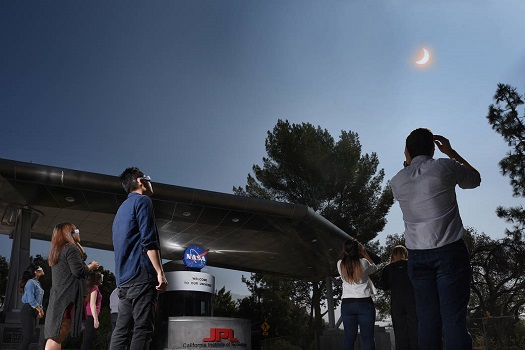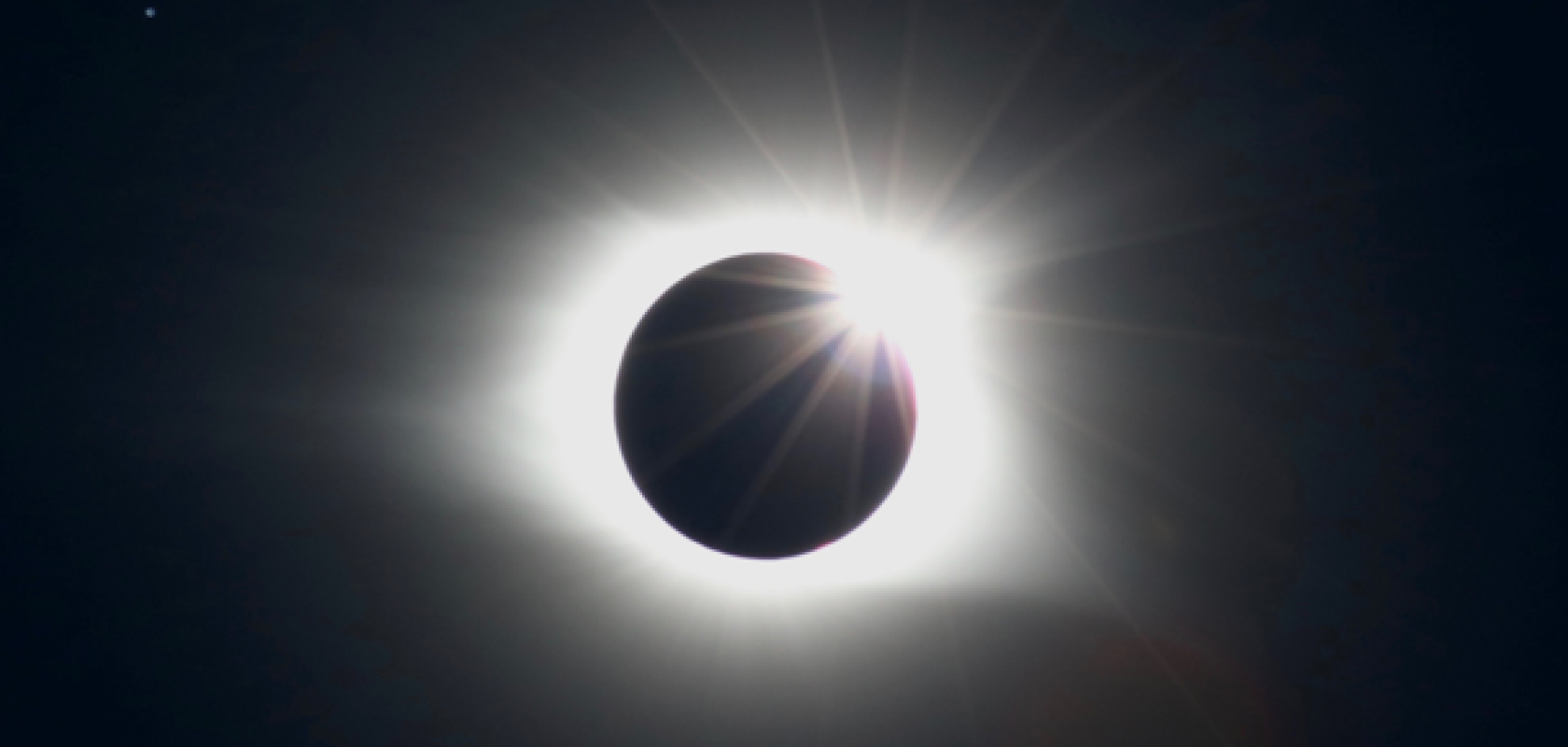Members of spectroscopy firm Avantes assisted the National Center for Atmospheric Research (NCAR) and NASA scientists take spectral measurements of the recent solar eclipse, visible from the United States on 21 August. The data collected from the experiments should help answer questions on why the Sun's outer atmosphere is hotter than it's surface, and on other phenomena such as solar flares.
The NCAR/ NASA observation post was set up on Casper Mountain in Wyoming to witness and study the eclipse from the path of totality. Situated approximately 8,000 feet (2,438m) above sea level, the site experienced ideal weather conditions for observing the event, with mild temperatures, low humidity, and near cloudless sky.

The eclipse being viewed by employees at Nasa's Jet Propulsion Laboratory. (Credit: NASA/Josh Krohn)
Avantes provided three spectrometers for use in NCAR High Altitude Observatory eclipse experiments. The ideal conditions experienced at the observation post allowed Dr Tomczyk, NACR scientist and section head, and his team collect a range of data in the visible and near infrared wavelengths from the solar corona, an aura of plasma surrounding the Sun that still presents a mystery to solar physicists.
The corona is usually hidden by the bright light of the sun's surface, making it difficult to observe even with telescopes and cameras. However, the corona can be viewed effectively during a total solar eclipse.
The corona is formed as the Sun's diverse and turbulent magnetic fields, formed by the motion of a dense mass of superheated gas that makes up the Sun's body, trail plasma outward from the denser gas core.
Something puzzling scientists is that, even though the corona is farther from the Sun's core and less dense, it is hotter than the sun’s surface by millions of degrees celsius. There are several theories, but as yet there is no scientific consensus and this coronal plasma effect remains a mystery. Data collected by the High Altitude Observatory and NCAR scientists on August 21st might be instrumental in providing answers.
These experiements may also help to advance knowledge of solar flares, which are formed as the churning magnetic fields of the sun occasionally erupt and allow a jet of high-energy radiation to escape, in what is called a coronal mass ejection. These massive explosions from the sun’s surface have the potential to be dangerous on Earth where technology can be adversely affected. Learning more about these coronal mass ejections with data about the corona collected during the eclipse might also help scientists better understand and predict this phenomena as well.
In one experiment, the HAO team used the new AvaSpec-NIR512-2.5-HSC-EVO to capture the NIR spectra from the entire corona out to 10 solar radii. In another, dual channels collected NIR (AvaSpec-NIR256-1.7-USB2) and visible (AvaSpec-ULS2048CL-USB2) spectra from paired telescopes to take spectra of the layers of the sun’s chromospere- the area between the photoshpere and the corona. By taking measurements in rapid succession every 8 milliseconds, and calculating this against the rate of the moon’s passage, the data is expected to provide something like a topographical map of the chromosphere layers.
The data collected at the Casper Mountain observation post will be analysed and decoded for new understanding and insights into the nature of our immediate solar system for years to come. NCAR and HAO will eventually be releasing their data to other researchers and scientists around the world, but preliminary reports from the HAO team are very optimistic.


